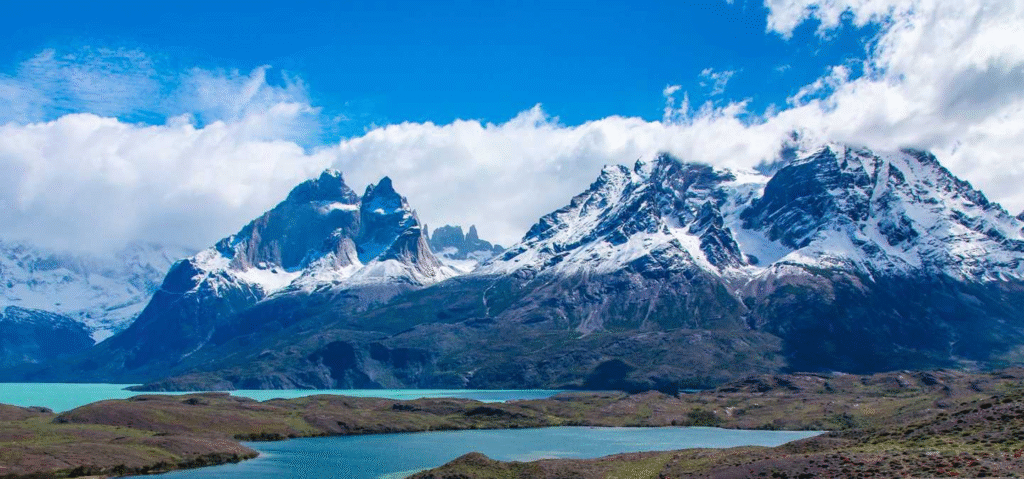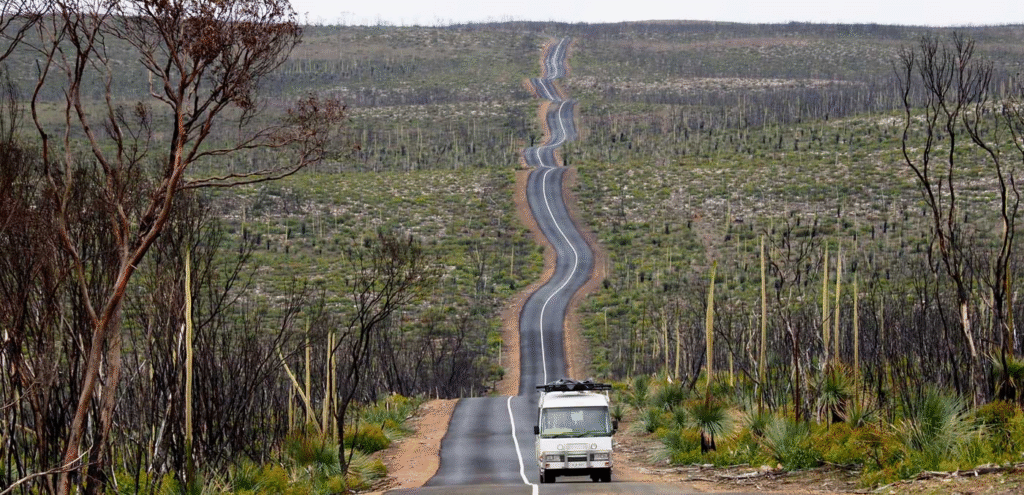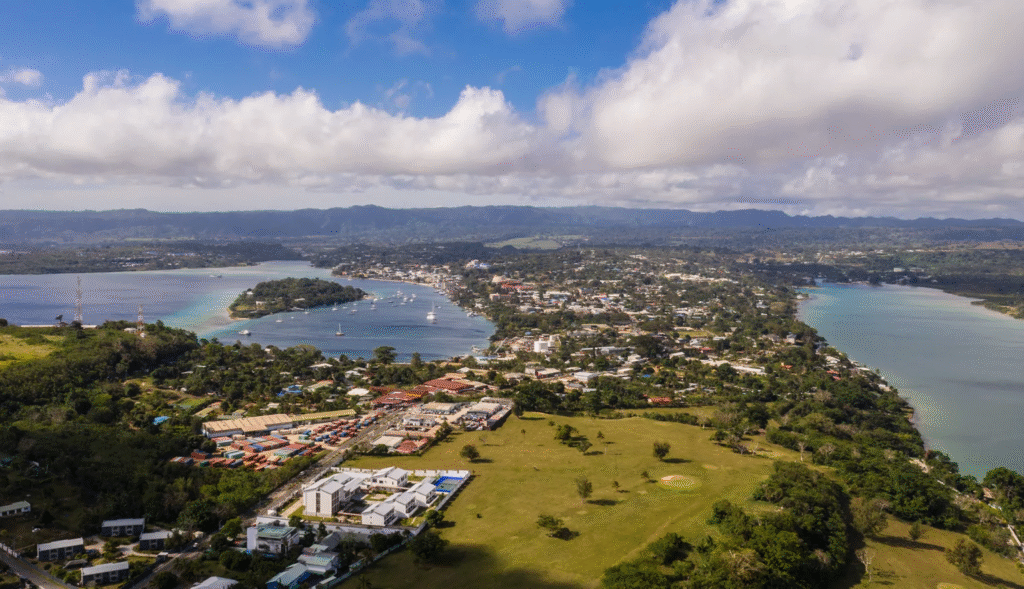40 Extraordinary Destinations That Will Transform Your 2025 Travel Experience
Where sustainable tourism meets unforgettable adventures
Travel has never been more powerful or more necessary. As we navigate a world where overtourism threatens beloved destinations and climate change reshapes our planet’s most precious places, the art of thoughtful travel has become both a privilege and a responsibility. This year’s collection of extraordinary destinations proves that the most meaningful journeys aren’t just about where you go, but how you go and the positive impact you leave behind.
From solar-powered safari camps in Botswana’s wilderness to community-led hiking trails through Jordan’s rust-red deserts, these 40 destinations represent a new era of travel. Each location has been carefully selected not just for its breathtaking beauty or cultural significance, but for its commitment to using tourism as a force for good supporting local communities, protecting fragile ecosystems, and preserving irreplaceable cultural heritage.
Whether you’re drawn to the otherworldly pink lakes of Western Australia, the pristine fjords of Greenland, or the ancient wisdom of Bhutan’s hidden valleys, your next great adventure awaits one that will change not only how you see the world, but how the world sees you.
1. Dominica: The Caribbean’s Best-Kept Secret

While hurricane-battered islands across the Caribbean struggle with overtourism, the “Nature Island” emerges as a beacon of authentic Caribbean culture. New direct flights from the United States make this UNESCO World Heritage destination more accessible than ever, while opening luxury eco-lodges ensure your stay supports local conservation efforts. Dive with sperm whales in crystal-clear waters or trek through pristine rainforests where indigenous Kalinago communities share centuries-old traditions.
2. Naoshima, Japan: Where Art Meets Island Life

Once known only for its polluting copper industry, this small Japanese island has undergone one of the world’s most remarkable cultural transformations. Home to Yayoi Kusama’s iconic yellow pumpkin sculptures and the new Tadao Ando-designed museum opening in spring 2025, Naoshima proves that sustainable tourism can revitalize dying communities. Ferry between art installations while supporting local businesses in the stunning Seto Inland Sea.
3. Lofoten Islands, Norway: Arctic Paradise Redefined

Beyond the Northern Lights lies an archipelago where traditional fishing villages coexist with cutting-edge sustainable tourism initiatives. New eco-friendly accommodations use geothermal energy and locally-sourced materials, while community-led experiences teach visitors about Sami culture and Arctic survival techniques. Visit during the midnight sun season for 24-hour daylight adventures or winter for aurora-chasing in glass igloos.
4. Greenland: The Final Frontier Gets Closer

The world’s largest island, home to just 57,000 people across two million square kilometers, has never been more accessible. New international airports in Nuuk and forthcoming connections make reaching this Arctic wonderland easier, while Greenland’s “Towards Better Tourism” pledge ensures your visit benefits local Inuit communities. Experience traditional dog sledding, witness calving glaciers, and sleep under the Northern Lights in luxury eco-camps powered entirely by renewable energy.
5. Wales: The Year of Croeso

Often overshadowed by England and Scotland, Wales celebrates 2025 as the “Year of Welcome” (Croeso), showcasing its unique language, culture, and stunning landscapes. The Wales Coast Path circumnavigates the entire country, offering uncrowded hiking through medieval castle ruins and dramatic coastlines. New sustainable accommodations in converted historic buildings and farm stays provide authentic experiences while supporting rural communities.
6. Western Newfoundland and Labrador, Canada: The Last Great Road Trip

The completion of the Trans-Labrador Highway after 25 years of construction opens up one of North America’s most remote wilderness areas. The new Expedition 51 circular route connects five Canadian provinces while passing UNESCO World Heritage Viking sites and Basque whaling stations. Government investment of $180 million in sustainable infrastructure ensures this vast landscape remains pristine for future generations.
7. Tucson, Arizona: Desert Gastronomy Capital

Celebrating its 10th anniversary as a UNESCO City of Gastronomy and 250th birthday, Tucson showcases 4,000 years of continuous agricultural heritage. The oldest cultivated soil in the United States still grows ancient crops like chiltepin peppers and nopales cactus, now featured in innovative restaurants earning global recognition. Native American-led cultural experiences and sustainable desert hiking make this Sonoran Desert city a model for cultural tourism.
8. Western Australia: The Electric Highway Adventure

Perth’s position as Australia’s gateway to Europe combines with the world’s longest electric vehicle charging network (6,600 kilometers) to make sustainable road tripping possible across WA’s 2.5 million square kilometers. Swim with whale sharks, photograph “quokkas” (the world’s happiest animals), and explore bubblegum-pink lakes while supporting the $20 million Indigenous tourism initiative that creates authentic cultural experiences led by Aboriginal communities.
9. Sri Lanka: Island Renaissance

Rising from recent economic challenges, Sri Lanka’s new leadership focuses on sustainable tourism to rebuild the nation. The opening of seven-star eco-hotels, new family-friendly resorts with stargazing facilities, and the launch of Sri Lanka’s first carbon-neutral airline demonstrate the country’s commitment to responsible growth. The 300-kilometer Pekoe Trail through tea plantations and the innovative tuk-tuk self-drive program ensure tourism dollars reach local communities directly.
10. Panama: 25 Years of Sovereignty

Marking 25 years since gaining control of the Panama Canal, this biodiversity hotspot unveils new museum exhibits and the “1000 km of Trails” project connecting remote communities with sustainable tourism. The Meaningful Travel Map partnership with Tourism Cares makes it easier to find locally-led experiences, from UNESCO-recognized hat weaving in La Pintada to cloud forest hiking where you can see both oceans from a single summit.
11. Rif Mountains, Morocco: Beyond the Beaten Path

While Morocco rebuilds after recent earthquakes and prepares for the 2030 FIFA World Cup, the northern Rif Mountains offer crowd-free adventures. New high-speed rail connections to Fez open up access to Chefchaouen’s blue-painted streets, cedar forest hiking in Talassemtane National Park, and Mediterranean coastal villages where Spanish colonial architecture meets Berber culture. Sufi centers and olive grove villages provide authentic cultural immersion.
12. Bradford, England: Industrial Heritage Meets Modern Culture

Named the 2025 UK City of Culture, Bradford emerges from Leeds’ shadow with a year-long celebration of diversity and innovation. The reopening of the National Science and Media Museum, new digital exhibitions honoring the Brontë sisters, and over 400 David Hockney works in a UNESCO World Heritage mill showcase the city’s creative renaissance. As Britain’s first UNESCO City of Film, Bradford offers behind-the-scenes access to locations from Peaky Blinders and The Railway Children.
13. Jordan: Adventure Capital of the Middle East

The new 120-kilometer Wadi Rum Trail transforms traditional 4×4 desert tours into immersive hiking experiences through landscapes featured in Star Wars, Dune, and The Martian. This community tourism project supports local Bedouin communities while protecting fragile desert ecosystems. The Aqaba Marine Reserve’s addition to the IUCN Green List recognizes Jordan’s commitment to conservation, while 33 protected ecosystems offer adventures from canyoning to diving.
14. Haa Valley, Bhutan: The Last Secret

In the world’s only carbon-negative country, the Haa Valley remains Bhutan’s best-kept secret, visited by fewer than 2% of international travelers despite being minutes from Paro Airport. The newly restored 400-kilometer Trans Bhutan Trail and community-run Katsho Eco Camp (built by guides who lost jobs during the pandemic) offer authentic glimpses into centuries-old rural life. With Bhutan’s Sustainable Daily Fee halved through 2027, this Himalayan paradise becomes more accessible while maintaining its commitment to Gross National Happiness over GDP.
15. Hawaii: Mālama (Give Back) Tourism

Following devastating wildfires, Hawaii’s Mālama program pairs travelers with over 350 volunteer opportunities, from restoring native forests to preserving endangered species habitats. In exchange, participants receive discounted stays at luxury resorts, including the Four Seasons Maui where The White Lotus was filmed. This innovative model shows how tourism can heal communities while providing meaningful experiences for visitors.
16. Uzbekistan: Youth-Driven Cultural Renaissance

With over 60% of its population under 30, Uzbekistan is experiencing a cultural revolution. The first major international Bukhara Biennial in September 2025 and Tadao Ando’s expansion of the State Museum showcase contemporary creativity alongside ancient Silk Road heritage. Visa-free access for 90+ countries, new international railway connections to Kazakhstan, and the Green Tourism Startup Lab initiative make this Central Asian gem increasingly accessible and sustainable.
17. Haida Gwaii, Canada: Indigenous Sovereignty in Action

The groundbreaking Haida Title Lands Agreement officially recognizes the Council of the Haida Nation as governing body of this 150-island archipelago, marking a transformative moment in Indigenous rights. Visitors learn Haida Laws like “everything depends on everything else” while exploring UNESCO World Heritage village sites, encountering endemic black bears, and experiencing environmental stewardship that has sustained these islands for 15,000 years.
18. Emerald Coast, Nicaragua: Central America’s Hidden Gem

The new $400 million Carretera Costanera highway opens 350 kilometers of Pacific coastline, connecting 53 beaches from the Gulf of Fonseca to Playa El Naranjo. This infrastructure project aims to boost the economy of Central America’s largest but least-visited country while maintaining its authentic character. World-class surf breaks, turtle nesting beaches, and UNESCO-listed Granada (celebrating its 500th anniversary) provide diverse experiences supporting local communities.
19. Isle of Man: Europe’s Unique Biosphere

Governed by the world’s oldest continuous parliament and recognized as a UNESCO Biosphere for its entire land and sea area, this self-governing British Crown Dependency offers a unique blend of ancient history and environmental innovation. The new Manx Birdlife Point of Ayre National Reserve and 175th anniversary celebrations of Okell’s Brewery provide fresh reasons to explore rolling countryside where you can see all four UK countries from Snaefell mountain’s summit.
20. Gilgit-Baltistan, Pakistan: Gateway to Giants

Home to five of the world’s fourteen 8,000-meter peaks including K2, Pakistan’s northern region offers unmatched mountain adventures through the new Salam Pakistan digital platform. The scenic “heaven’s gate” region features cherry blossom valleys, Shangri-La lakes, and the year-round operational Khunjerab Pass to China. Responsible tourism initiatives and e-visa accessibility make this mountaineering paradise increasingly welcoming to international visitors.
21. Azores: Europe’s Marine Sanctuary

Portugal’s nine-island Atlantic archipelago creates Europe’s largest protected marine sanctuary, spanning 287,000 square kilometers to safeguard deep-sea corals, sharks, and 28 whale and dolphin species. Volcanic landscapes feature steaming hot springs, jewel-colored crater lakes, and dramatic black-sand beaches. The islands’ commitment to marine conservation enhances already exceptional whale-watching opportunities while supporting sustainable fishing communities.
22. Faroe Islands: Nordic Sustainability Model

This North Atlantic archipelago of 18 islands pioneers sustainable tourism through the “Closed for Maintenance” initiative, where tourists help maintain hiking trails and preserve cultural sites. The new Eysturoy tunnel system connects previously isolated communities, while grass-roof architecture and renewable energy systems showcase Nordic sustainability. Traditional village experiences and dramatic cliff-top hiking provide authentic Nordic culture without the crowds of Iceland or Norway.
23. Madidi National Park, Bolivia: Amazon’s Crown Jewel

One of the world’s most biodiverse places, Madidi spans from 6,000-meter Andean peaks to Amazon lowlands, harboring more species than some entire countries. Community-led eco-lodges owned by indigenous groups provide authentic rainforest experiences while protecting this fragile ecosystem. Jaguar tracking, canopy walks, and cultural exchanges with indigenous communities support conservation efforts and provide sustainable livelihoods for local people.
24. Botswana: Elephant Capital Goes Premium

Africa’s leader in green safari tourism expands visa-free access to 104 countries while maintaining its high-value, low-impact ecotourism model. The “Elephant Capital of the World” features solar-powered safari camps in the UNESCO-listed Okavango Delta and Chobe National Park. New luxury eco-lodges use renewable energy and support anti-poaching efforts while providing intimate wildlife encounters with cheetahs, black rhinos, and massive elephant herds.
25. Tasmania, Australia: Devil Island Wilderness

Australia’s island state emerges as a model for conservation tourism through the Museum of Old and New Art (MONA) and wilderness experiences in Cradle Mountain-Lake St Clair National Park. The Tasmanian devil breeding program offers unique wildlife encounters, while the Three Capes Track and Overland Track showcase temperate rainforests and alpine landscapes. Local producers create world-class wines, whiskeys, and artisanal foods supporting the island’s sustainable tourism economy.
26. Raja Ampat, Indonesia: Crown Jewel of Marine Biodiversity

Known as the “Four Kings,” this remote Indonesian archipelago harbors 75% of all known coral species and provides the planet’s richest marine biodiversity. Community-based conservation programs funded by diving tourism have restored fish populations and coral reefs while providing sustainable livelihoods for local communities. New eco-resorts use solar power and rainwater harvesting while offering world-class diving and snorkeling experiences.
27. Scottish Highlands: Rewilding Revolution

Scotland’s Highlands undergo Europe’s largest rewilding project, reintroducing native species and restoring ancient forests. The new North Coast 500 route showcases dramatic landscapes while supporting rural communities through sustainable tourism. Historic castles converted into eco-lodges, community-owned hiking trails, and traditional crofting experiences provide authentic Highland culture while contributing to conservation efforts.
28. Estonian Islands: Digital Nomad Paradise

Estonia’s Saaremaa and Hiiumaa islands combine medieval heritage with cutting-edge digital infrastructure, creating unique destinations for remote workers and culture seekers. Ancient castles, traditional windmills, and spa towns provide historical immersion, while high-speed internet and co-working spaces support digital nomads. The islands’ commitment to renewable energy and sustainable transport makes them models for responsible tourism development.
29. Chilean Patagonia: Torres del Paine Expansion

Chile expands Torres del Paine National Park and creates new protected areas in Patagonia, opening vast wilderness to sustainable tourism. New eco-lodges built with local materials provide luxury experiences while supporting conservation. Gaucho culture experiences, puma tracking, and glacier trekking offer authentic Patagonian adventures while contributing to habitat protection and local community development.
30. Cyprus: Mediterranean Island Renaissance

Divided Cyprus reunites through sustainable tourism initiatives promoting both Greek and Turkish Cypriot culture. New archaeological discoveries, restored historic buildings, and innovative cultural festivals celebrate the island’s diverse heritage. Marine protected areas and turtle conservation programs enhance Cyprus’s appeal as a responsible Mediterranean destination combining ancient history with modern sustainability.
31. Kangaroo Island, Australia: Post-Fire Recovery

Following devastating 2020 bushfires, Kangaroo Island rebuilds through conservation-focused tourism supporting native wildlife recovery. New eco-lodges fund koala breeding programs and habitat restoration while providing unique Australian wildlife experiences. Local producers of honey, wine, and artisanal foods demonstrate sustainable agriculture practices while supporting the island’s economic recovery.
32. North Macedonia: Balkan Hidden Gem

This landlocked Balkan nation emerges as Europe’s most affordable and authentic cultural destination. Ohrid’s UNESCO World Heritage lakeside setting provides stunning natural beauty, while Skopje’s mix of Ottoman, Byzantine, and modern architecture tells the region’s complex history. New eco-tourism initiatives in Mavrovo National Park support rural communities while showcasing pristine mountain landscapes and traditional village life.
33. Rwanda: Conservation Success Story

Rwanda’s remarkable transformation from genocide to conservation leader continues with innovative community-based tourism programs. Mountain gorilla tracking in Volcanoes National Park funds both conservation and community development, while new luxury eco-lodges demonstrate sustainable tourism’s potential. Cultural villages, traditional craft workshops, and genocide memorial sites provide powerful educational experiences supporting Rwanda’s healing and development.
34. Socotra Island, Yemen: Galápagos of the Indian Ocean

Despite regional challenges, UNESCO World Heritage Socotra Island opens limited sustainable tourism showcasing 37% endemic plant species found nowhere else on Earth. The iconic dragon’s blood trees and pristine beaches provide unique experiences while supporting local communities through carefully managed eco-tourism. Scientific research programs allow visitors to contribute to conservation efforts while experiencing this biological treasure.
35. Palawan, Philippines: Last Frontier Conservation

The Philippines’ “Last Frontier” balances tourism growth with marine conservation through innovative community-based programs. The Underground River UNESCO World Heritage site and El Nido’s limestone cliffs provide stunning natural beauty, while new marine protected areas and sustainable fishing programs demonstrate conservation success. Local community ownership of tourism businesses ensures benefits reach indigenous groups and fishing villages.
36. Madagascar: Lemur Island Biodiversity

The world’s fourth-largest island, where 90% of species exist nowhere else, develops community-based ecotourism supporting both conservation and rural development. Lemur tracking in rainforest reserves, baobab tree conservation, and traditional Malagasy culture experiences provide unique adventures while funding habitat protection. New eco-lodges built and operated by local communities demonstrate sustainable tourism’s potential in one of the world’s poorest countries.
37. Georgia: Caucasus Cultural Crossroads

Where Europe meets Asia, Georgia combines ancient winemaking traditions, UNESCO World Heritage cave cities, and Caucasus mountain adventures. The world’s oldest wine region offers authentic cultural experiences while supporting rural communities. New sustainable tourism initiatives in Svaneti’s remote mountain villages and Adjara’s coastal regions demonstrate how tourism can preserve traditional culture while providing economic opportunities.
38. Vanuatu: Pacific Paradise Recovery

This Pacific island nation rebuilds from cyclone damage through sustainable tourism emphasizing cultural authenticity and environmental protection. Traditional custom villages, active volcano experiences, and world-class diving support local communities while showcasing unique Melanesian culture. New eco-resorts use renewable energy and traditional building techniques while providing luxury experiences that benefit indigenous communities.
39. Arctic Sweden: Indigenous Sami Experiences

Swedish Lapland offers authentic Sami culture experiences while supporting indigenous communities’ efforts to preserve traditional lifestyles. Reindeer herding experiences, traditional handicraft workshops, and Northern Lights viewing in sustainable eco-lodges provide cultural immersion while respecting Sami autonomy. New infrastructure improvements make remote areas more accessible while maintaining their pristine character.
40. São Tomé and Príncipe: Africa’s Chocolate Islands

This tiny two-island nation in the Gulf of Guinea emerges as Africa’s best-kept secret, offering pristine rainforests, empty beaches, and the world’s finest cacao. Community-based ecotourism programs in former plantation areas support local development while preserving biodiversity. Traditional chocolate-making experiences, turtle nesting tours, and rainforest hikes provide authentic adventures while contributing to conservation and community development.
The Future of Travel is Here

These 40 destinations represent more than just places to visit—they’re examples of how travel can become a powerful force for positive change. Each location demonstrates that sustainable tourism isn’t about sacrificing comfort or adventure; it’s about creating deeper, more meaningful connections with places and people while ensuring these extraordinary destinations remain pristine for future generations.
As you plan your 2025 adventures, consider not just where you want to go, but how you want to travel. Choose destinations that welcome you as a partner in their conservation and development efforts. Support local communities, respect cultural traditions, and leave places better than you found them.
The world’s most extraordinary destinations are waiting and they need travelers who understand that the best journeys change not just the traveler, but the places they visit. Your next great adventure isn’t just about the memories you’ll make, but the difference you’ll make in making them.
Also read
Top 10 Must-Visit Destinations for 2025: Where the World Wants to Go Next
Pakistan Travel Guide: Nigeria to Pakistan flights
20 Best Places to Go for a Summer Vacation in Africa
Book Cheap Flights to Japan: Your Gateway to the Land of Rising Adventures
From Book Club to Billion-Dollar Empire: Reese Witherspoon’s Strategy and Storytelling








